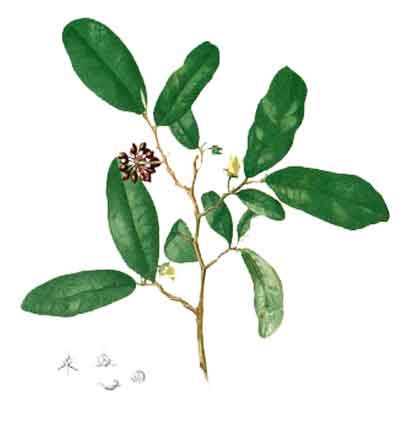
Family • Annonaceae
Kalimatas
Phaeanthus ebracteolatus (Presl) Merr.
| Scientific names | Common names |
| Guatteria macropoda (Miq.) Zipp. ex Burck | Alatauan (Tag.) |
| Monoon macropodum (Miq.) | Amyung (Pamp.) |
| Phaeanthus cumingii Miq. | Banatan (Tag.) |
| Phaeanthus ebracteolatus (Presl) Merr. | Banitan (Tag.) |
| Phaeanthus macropodus (Miq) Diels | Batnitang (Tag.) |
| Phaeanthus nitidus Elmer | Dalinas (Tag.) |
| Phaeanthus ophthalmicus (Roxb. ex G.Don) J. Sinclair. | Kalimatas (Tag.) |
| Phaeanthus pubescens Merr. | Kalumatas (Tag.) |
| Phaeanthus schefferi Boerl. ex Koord. | Katinatau (Tag.) |
| Polyalthia macropoda (Miq.) F. Muell. | Langlañgas (Ilk.) |
| Uvaria ebracteolata Presl | Lanotan (Tag.) |
| Uvaria ophthalmica Roxb. ex G.Don | Lanotang-itim (Tag.) |
| Lanutan (Tag.) | |
| Marasigiat (Gad.) | |
| Oyoi (Tag.) | |
| Puropugai (Neg.) | |
| Takulau (Ilk.) | |
| Yamban (Sbl.) | |
| Bien (Papua New Guinea) | |
| Lanutan is a common name shared by: (1) Kalai, Alphonsea arborea (2) Malaatis, Dasymaschalon clusiflorum (3) Kalimatas, Phaenthus ebracteolatus, and (4) Duhat-matsing, Polyalthia suberosa. | |
| Phaeanthus ebracteolatus (C.Presl) Merr. is a synonym of Phaeanthus ophthalmicus (Roxb. ex G.Don) J.Sinclair The Plant List | |
| Phaeanthus ophthalmicus (Roxb. ex G.Don) J.Sinclair is an accepted name The Plant List | |
| Other vernacular names |
| MALAYSIA: Pisang-pisang bukit, Pisang-pisang paya, Akar riang-riang, Pokok chengkering. |
| PAPUA NEW GUINEA: Name |
| COUNTRY: Bien. |
Distribution Constituents Properties Studies Availability |
Godofredo U. Stuart Jr., M.D. |
Last Update October 2015
![]()
 |
| IMAGE SOURCE: Public Domain / File:Phaeanthus malabaricus Blanco1.193.png / Flora de Filipinas / 1880 - 1883 / Francisco Manuel Blanco (O.S.A) / Modifications by Carol Spears / Wikimedia Commons |
Additional
Sources and Suggested Readings |
| It is not uncommon for links on studies/sources to change. Copying and pasting the information on the search window or using the DOI (if available) will often redirect to the new link page. |
• |
 |

 Botany
Botany